It’s been an odd soccer season in Europe, and not just because it was interrupted by a World Cup in November and December. The Champions League has given us dollops of parity: take Barcelona and Atletico Madrid bombing out in the group stage while Club Brugge advanced, Napoli looking like the best team in Europe for months (and Serie A placing three teams in the quarterfinals and two in the semis like it’s 2003 all over again or something), last year’s finalist Liverpool failing quickly and quietly, 2020 finalists Bayern and PSG basically doing the same, and so on. Meanwhile, Bayern is threatening to end its 10-year Bundesliga title streak and Arsenal has spent most of the season atop the Premier League table like it’s 2004 all over again or something.
As tends to be the case, though, order begins to shine through chaos toward the end of the season. The best team in Europe (Manchester City) and the tournament’s most frequent winner (Real Madrid) remain in the hunt for the Champions League crown, and City has solid odds of winning England’s first treble (the Premier League, FA Cup and Champions League titles) since 1999. PSG is going to win Ligue 1 yet again, Bayern could still win the Bundesliga, and Barcelona has just about polished off its first LaLiga title since 2019.
– Stream on ESPN+: LaLiga, Bundesliga & more (U.S.)
While we wait to see how much competitive balance the soccer gods elect to share with us, we’re also awash in post-mortems. A number of the world’s more successful and/or monied clubs are already out of the Champions League running, and some have suffered dour league form as well. The present tense still has plenty of questions to answer, but let’s look into the future a bit, as well.
For the 12 teams thus far eliminated from the Champions League knockout rounds, what questions await as they attempt to prepare for greater success moving forward?
Premier League
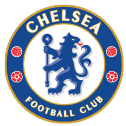 Chelsea
Chelsea
Last season: Third place (74 points, +43 goal differential), eliminated by Real Madrid in the Champions League quarterfinals
This season: 11th place (on pace for 46 points and -6 goal differential), eliminated by Real Madrid in the Champions League quarterfinals
Most immediate issue to address: goals, obviously. For the comprehensiveness of Chelsea’s collapse in 2022-23, it’s mostly shown up on one side of the ledger. The Blues have still allowed the fourth-fewest goals and fifth-lowest xG averages, and while those aren’t the greatest numbers this club has ever produced, it’s not the problem.
The problem is that they’re 14th in goals scored. Forwards Kai Havertz and Joao Felix have been mired in dreadful finishing slumps — they’ve combined for 11 goals from shots worth 18.44 xG this season — but even if they were finishing at proper levels and had seven more goals between them, Chelsea would still only be 13th in scoring. The main problem has been the attack itself, not the finishing.
Even with Romelu Lukaku and Timo Werner suffering through their own issues, Chelsea was still third in Premier League scoring last season; it sent both of those forwards away (Werner permanently, Lukaku on loan) and spent a market-redefining amount on a new team, and is averaging less than half the goals. The Blues have fallen from fourth in shots per possession to ninth and from seventh in xG per shot to 15th.
RB Leipzig‘s Christopher Nkunku will arrive this summer, and the club has added five players — including Raheem Sterling and the extremely expensive Mykhaylo Mudryk — via transfer, plus Felix on loan. They still have Havertz, Christian Pulisic and Hakim Ziyech. In theory, this summer will be about thinning the attacker crop a good amount, crafting something cohesive out of what’s left and then ceasing with the transfers for a while. This isn’t Football Manager!
 Liverpool
Liverpool
Last season: second place (92 points, +68 goal differential), eliminated by Real Madrid in the Champions League final
This season: six place (on pace for 63 points, +26 goal differential), eliminated by Real Madrid in the Champions League round of 16
Most immediate issue to address: defensive resistance. In 63 matches last season, Liverpool allowed opponents 471 total shots, 65 worth at least 0.3 xG. In just 45 matches this season it has allowed 468 and 61, respectively.
When Liverpool has struggled in the past under Jurgen Klopp, however briefly, it was almost always because opponents were creating too many high-quality looks in transition. It’s the risk of Klopp’s high-wire, risk-reward pressing approach. As tends to be the case, Liverpool is allowing the highest xG per shot average in the Premier League this season, but any attempts at limiting shot quantity has fallen apart.
-
Liverpool defense, 2021-22 (all competitions): 0.76 goals allowed per game, 1.02 xG allowed, 0.075 shots allowed per possession, 0.137 xG allowed per shot
-
Liverpool defense, 2022-23 (all competitions): 1.29 goals allowed per game, 1.42 xG allowed, 0.110 shots allowed per possession, 0.137 xG allowed per shot
That’s a 70% increase in goals allowed and a 39% increase in xG, all with the same shot quality. Liverpool’s entire defensive apparatus has grown creaky, and the club has allowed the midfield to get particularly old. While it spent €137 million in transfer fees this season, roughly €122m of that went toward acquiring attackers Darwin Nunez and Cody Gakpo.
Rebuilds can be clunky and discontinuous — you don’t perfectly address your needs in the exact order that they need to be addressed — but while Nunez and Gakpo could form a devastating scoring tandem for the next great Liverpool squad, the club has some overdue needs to address before said greatness can occur.
Let’s see what midfielders it brings in this summer, and let’s see how much of an immediate effect the additions have.
 Tottenham Hotspur
Tottenham Hotspur
Last season: fourth place (71 points, +29 goal differential), eliminated in the Conference League group stage
This season: seventh place (on pace for 63 points, +8 goal differential), eliminated by AC Milan in the Champions League round of 16
Most immediate issue to address: a future identity (one that actually sticks). One minute into the USA Network broadcast of Sunday’s Tottenham-Newcastle match, the announcer was declaring this a make-or-break week for Spurs, who also play Manchester United on Thursday and at Liverpool on Sunday. As he was saying this, Newcastle scored its first goal. It scored again four, seven, 17 and 19 minutes later on the way to a stunning 6-1 win.
1:12
Gab and Juls stunned by Tottenham’s tactics vs. Newcastle
Gab Marcotti and Julien Laurens discuss Tottenham’s disastrous 6-1 loss to Newcastle in the Premier League.
Spurs have become the perfect example of why you shouldn’t let a new managerial hire dictate too much of your transfer philosophy. The starting lineup that got so completely destroyed on Sunday featured one player who made his Spurs debut under Harry Redknapp, one who did so under Andre Villas-Boas, three who did so under Mauricio Pochettino, one who was acquired during the extremely brief Nuno Espirito Santo era and four who were acquired for Antonio Conte. Those are all very, very different managers.
Pochettino’s Spurs reached the Champions League final and earned three straight Premier League top-three finishes with an aggressive, proactive, possession-heavy approach. When that burned out, Spurs hired three straight managers who play more reactive, counterattacking ball (but only after considering managers with completely different styles first).
Despite the successes on Conte’s résumé, his version of reactive ball grew less and less successful over time. Tottenham ranks 17th in shots allowed per possession this season; Spurs also rank second in xG allowed per shot, but when you’re giving opponents that many opportunities, and when your goalkeepers rank 13th in save percentage, you’re going to allow too many goals.
I’m not sure what style would work best for Spurs moving forward, but they’ve wasted the past few years of Harry Kane‘s prime, refusing to ship him to another club for huge money while failing to craft anything cohesive around him. They need to actually craft a future vision and build around it, and thanks to the past few years of decision-making, it’s hard to be confident in their ability to pull that off.
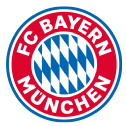 Bayern Munich
Bayern Munich
Last season: first place (77 points, +60 goal differential), eliminated by Villarreal in the Champions League quarterfinals
This season: second place (on pace for 69 points, +54 goal differential), eliminated by Manchester City in the Champions League quarterfinals
Most immediate issue to address: shot quality. Over its past six matches, Bayern has won only once, drawn twice, lost three times, found itself eliminated from both the Champions League and DFB-Pokal and has fallen to second in the Bundesliga race. This all came after it inexplicably panic-fired manager Julian Nagelsmann, who had lost just three times in the season’s first seven months.
0:53
Why Bayern coach Thomas Tuchel is ‘delusional’
Craig Burley says Bayern coach Thomas Tuchel got a reality check after his team exits the Champions League at the hands of Man City.
On one hand, you could say Bayern has been unlucky — in these six matches, it scored five goals from 102 shots worth 12.1 xG, a dreadful finishing funk that won’t last. On the other hand, xG averages aren’t all the same. The higher percentage of particularly high-quality shots you create, the more likely you are to score, and Bayern is creating fewer high-quality looks than ever. Last year in all competitions, 13.9% of its shots were worth at least 0.3 xG; this season it’s just 9.6%, and it’s been just 6.9% in these dismal six games.
This is what happens when you lose Robert Lewandowski and replace him with a natural winger (Sadio Mane) and a 17-year-old (Mathys Tel).
-
Robert Lewandowski, 2021-22: 4.5 shots per 90 minutes, 28% worth 0.3 xG or more
-
Sadio Mane, 2022-23: 3.2 shots per 90, 16% worth 0.3 xG or more
-
Mathys Tel, 2022-23: 4.9 shots per 90, 0.11 xG per shot, 0% worth 0.3 xG or more
Lewandowski was responsible for a large percentage of the team’s high-quality looks in recent years, as tends to be the case with star center-forwards. Without him, Bayern’s attack has remained ultra-talented, but aside from when former Lewandowski backup Eric Maxim Choupo-Moting has been healthy and hot, the attack has had no natural center of gravity. (The 34-year old has played only three matches, with zero goals, since March 8.) This was the case with Nagelsmann, and it has been the case thus far with replacement Thomas Tuchel.
With Bayern losing its composure both in the boardroom (with the recent panic move) and locker room (with the dust-up between stars), it will be interesting to see whether the club digs itself more of a hole or if it quickly rights the ship. Shot quality isn’t its lone deficiency, but if it can add an excellent center-forward this summer — Napoli’s Victor Osimhen? Eintracht Frankfurt‘s Randal Kolo Muani? — a lot of those other issues will take care of themselves.
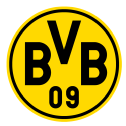 Borussia Dortmund
Borussia Dortmund
Last season: second place (69 points, +33 goal differential), eliminated by Rangers in the Europa League round of 24
This season: first place (on pace for 70 points, +32 goal differential), eliminated by Chelsea in the Champions League round of 16
Most immediate issue to address: defensive passivity. BVB is on pace to almost perfectly match last year’s point total and goal differential, but it’s in first place now because of Bayern’s regression. Still, it had Erling Haaland last year and has battled a steady stream of injuries and illness this season, so the fact that it’s on a similar pace is an accomplishment.
The Borussia attack has not been as explosive this season — to be expected considering the loss of Haaland and the absence of replacement Sebastien Haller for the first few months — but despite a couple of costly blown leads that have prevented it from being comfortably ahead in the table, the defense as a whole has significantly cut the breakdowns. It has gone from allowing 0.139 xG per shot in 2021-22, a Liverpool-esque worst in the Bundesliga, to allowing just 0.104, ranking second.
Opponents are attempting 53% of their shots in the box (12th) and averaging 0.13 shots per possession (10th), however, and this passivity was magnified in the Champions League, where opponents averaged 0.16 shots per possession. Goalkeeper Gregor Kobel played brilliantly (81.0 save percentage in the Champions League), but elite opponents are still too comfortable and settled in attack, and BVB will likely have to improve on that without star midfielder Jude Bellingham next season.
There are two directions BVB could go from here. Either it commits to a reactive, counterattacking approach — and with winger Karim Adeyemi‘s speed, that isn’t entirely unattractive — or it does what Borussia Dortmund tends to do: attack. With the money it would get from a potential Bellingham transfer, it would need to seek out players (midfielders in particular) who can put pressure on opponents and make them more uncomfortable in buildup if it wants to advance further in Europe.
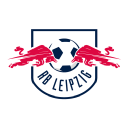 RB Leipzig
RB Leipzig
Last season: third place (58 points, +35 goal differential), eliminated by Rangers in the Europa League semifinals
This season: fifth place (on pace for 60 points, +19 goal differential), eliminated by Manchester City in the Champions League round of 16
Most immediate issue to address: What does it mean to be a modern German club in 2023-24? Bundesliga teams have learned to defend in 2022-23. Well, sort of. Scoring averages have barely changed, but the average Bundesliga team attempted 72% of its shots with at least two defenders between the shooter and goal last season, and that’s up to 82% this season. The best teams aren’t finding as much success with aggression and full-pitch pressure, and that has sort of left RB Leipzig — a team stylistically designed to be the most German of German teams — in a bit of a bind.
RB Leipzig can still sometimes hit you in transition, but its pressing game hasn’t created as much opportunity as usual, and as with BVB, its attacking numbers are down. That’s somewhat understandable considering star Christopher Nkunku’s injury issues, but he has gone after this year anyway, so it has to figure out how to better create opportunities moving forward.
Leipzig also needs much, much better goalkeeping. It has lost 11 matches this season, and in nine of them, its goalkeeper was in the negative in goals prevented (the difference between goals allowed and the post-shot xG value of the shots on target that he faced). It is eighth in the league in goals prevented this season and 15th in save percentage. Peter Gulacsi has missed much of the season with a torn ACL, but he had a dreadful 50% save percentage before his injury, and backup Janis Blaswich is at only 63%. They are also 32 and 31 years old, respectively.
A refresh is probably needed.
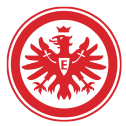 Eintracht Frankfurt
Eintracht Frankfurt
Last season: 11th place (42 points, -4 goal differential), won the Europa League
This season: ninth place (on pace for 49 points, +5 goal differential), eliminated by Napoli in the Champions League round of 16
Most immediate issue to address: depth. It was forgivable last season, when Eintracht faded dismally in league play while focusing entirely on its miraculous Europa League run. It won it and therefore qualified for the Champions League, so it didn’t matter that it only pulled 11 points from its last 13 Bundesliga matches.
It matters a bit more that it has pulled only four points from its past eight matches this season. Eintracht reached the Champions League knockout stages — its best performance in Europe’s biggest competition in 63 years — during a solid fall run, but it bowed out meekly against Napoli and, with help from injuries, it seems to have completely run out of gas.
With this season’s Champions League revenue — plus the funds from a potential transfer for star Randal Kolo Muani if it is unable to keep him — Eintracht simply needs to add more capable bodies.
It also needs a more balanced midfield. It has crafted an odd style under Oliver Glasner — one too direct to be a possession team, but not nearly direct enough to sport a defense-and-countering identity. It ranks 15th out of 18 in the Bundesliga in shots per possession, and in what I define as “transition possessions” (possessions that start outside the attacking third and last 20 or fewer seconds), it ranks 11th in goals allowed.
It really feels like an upgrade is needed in central midfield. Sebastian Rode (1,773 minutes in all competitions) is 32 years old, and Daichi Kamada (2,830 minutes) is out of contract this summer. Djibril Sow is solid, but needs more sturdy help, as Glasner’s attack-minded 3-4-2-1 formation has resulted in a little too much stress and midfield isolation in a Bundesliga less vulnerable to pressing and attack.
 Napoli
Napoli
Last season: third place (79 points, +43 goal differential), eliminated by Barcelona in the Europa League round of 24
This season: first place (on pace for 96 points, +56 goal differential), eliminated by AC Milan in the Champions League quarterfinals
Most immediate issue to address: again, depth. It feels odd to put the soon-to-be Scudetto winners — their magic number for clinching their first Serie A title in 33 years is down to four points — on any sort of “disappointments” list. But for as grand as the celebrations will be when they eventually clinch the title, their form indeed suffered just enough this spring to remind us that they aren’t yet a finished product.
After losing only twice in all competitions before March, Napoli dropped league matches to Lazio (March 3) and a 4-0 whopper to AC Milan (April 2), as well as suffering through a scoreless draw with relegation-threatened Hellas Verona on April 15. Meanwhile, with star forward Osimhen battling back from injury, its nearly flawless Champions League run was also stopped by Milan, which won 1-0 at home and survived a 1-1 draw in Naples.
Still, there’s been obvious evolution in nearly every statistical category this season, and a lot of it stems from a nearly perfect set of summer 2022 transfers. The addition of Khvicha “Kvaradona” Kvaratskhelia had obvious effects — he has 14 goals and 14 assists in all competitions — but the team also added immediate stalwarts in defender Kim Min-Jae from Fenerbahce and midfielder Andre-Frank Zambo Anguissa from Fulham. Keeping on-loan forward Giovanni Simeone from Hellas could be vital if the club ends up biting on a big transfer offer for Osimhen.
No one gets A+ transfer-window grades year after year, but clubs like Liverpool and AC Milan have proved that if you can nail a couple in a row, you can completely transform your club. Napoli is not yet a finished product from a depth perspective, but it is one more great summer away from another potential Scudetto and Champions League run.
Ligue 1
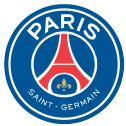 Paris Saint-Germain
Paris Saint-Germain
Last season: first place (86 points, +54 goal differential), eliminated by Real Madrid in Champions League round of 16
This season: first place (on pace for 89 points, +52 goal differential), eliminated by Bayern in Champions League round of 16
Most immediate issue to address: What does PSG want to be? Ligue 1 has been particularly watchable this season, but in a sea of fun middleweights, the team with Kylian Mbappe, Lionel Messi and a sometimes-healthy Neymar is going to once again run away with the title, just as it did (with almost identical rate stats) last season. Neither familiar contenders like Marseille and Monaco nor the rising Lens could avoid potholes, and PSG was once again too talented for France and too imbalanced for a Champions League run.
No matter who suits up next season, PSG will be the favorite once again. That’s the way Ligue 1 works right now. But while the big summer story in Paris could be Messi’s likely departure after just two seasons, and the Mbappe transfer rumor industry is always looking for just a single shred of a reason to kick into fifth gear, there’s still a long-term building project to watch. Sporting director Luis Campos has been on the job for only a year, and he completely transformed PSG’s aging midfield, adding the likes of Vitinha (23 years old), Nuno Mendes (20), Fabian Ruiz (27), Carlos Soler (26) and Nordi Mukiele (25), who have combined for nearly 10,000 minutes at midfield and wingback this season. Warren Zaire-Emery, just 17 years old, has also contributed 738 minutes.
With goalkeeper Gianluigi Donnarumma and Mbappe (if he remains in Paris) still only 24 years old, it’s easy to see the core of a particularly special team developing over time, at least if this consistently stressed-out club can maintain a long-term vision. But a patient plan is difficult to execute, and the growing frustration of increasingly meek European performances certainly clouds said future at the moment.
Other big teams
 Benfica
Benfica
Last season: third place in the Primeira Liga (74 points, +48 goal differential), eliminated by Ajax in the Champions League round of 16
This season: first place (on pace for 87 points, +61 goal differential), eliminated by Inter in the Champions League quarterfinals
Most immediate issue to address: Keeping Goncalo Ramos. We know how things tend to work for Portugal‘s top clubs in the overall European food chain: Play quality ball, succeed domestically, acquit yourself well (but not too well) in the Champions League and send your best players to bigger clubs, usually in the Premier League.
In the past 12 months alone, Benfica has sold the rights to forward Darwin Nunez (to Liverpool last summer) and midfielder Enzo Fernandez (Chelsea in January) for a combined €201m. It managed to improve significantly without Nunez, thanks in part to thriving newcomers in manager Roger Schmidt and Fernandez, added from River Plate; it lost only one of its first 26 league matches and topped PSG for first place in their Champions League group. Benfica held on for a while after losing Fernandez, too, throttling a punch-less Club Brugge in the Champions League round of 16 and winning all six league matches in February and March.
April, however, has been rough. It lost to Porto and Chaves in the league and couldn’t keep up with Inter in the Champions League quarters. Its league lead, once huge, is down to four points.
Benfica will have another shot at particularly strong ball next year, but it will probably require holding onto 21-year-old forward Goncalo Ramos, a.k.a. the primary reason it was so strong without Nunez, who has scored 24 goals in all competitions this season. Benfica will be as good as normal without him, but it could be special if he stays in Lisbon for one more season.
 Porto
Porto
Last season: first place in the Primeira Liga (91 points, +64 goal differential), eliminated by Lyon in the Europa League round of 16
This season: second place (on pace for 82 points, +50 goal differential), eliminated by Inter in the Champions League round of 16
Most immediate issue to address: the balance between veterans and young star power. Porto lost Vitinha to PSG and Fabio Viera to Arsenal and fell behind a torrid Benfica in the fall. It looked like the league race was lost, but it has pulled 19 points from seven matches to pull within four points; it also outplayed Inter for large portions of their Champions League tie, but somehow none of its 31 shot attempts, worth a combined 3.5 xG, found the net. Poor finishing, plus 10 saves from Inter’s Andre Onana, doomed Porto.
Porto has been better than Benfica this spring, but the two rivals’ futures are awfully similar. Porto has a lot of players bigger clubs will come after in the near future — goalkeeper Diogo Costa and forward Evanilson, to name two — but is a bit more veteran-heavy than Benfica as well. That probably gives it both a higher floor (good for future league finishes) and a lower ceiling (bad for future Champions League runs). Porto might be pretty content with that trade-off, but it will probably take another young star or two to make it past the Champions League quarterfinals for the first time since 2004.
 Club Brugge
Club Brugge
Last season: first place in the Jupiler Pro League (72 points, +35 goal differential in regular season; 14 points, +6 goal differential in championship playoff), eliminated in the Champions League group stage
This season: fourth place (59 points, +25 goal differential) heading into championship playoff, eliminated by Benfica in the Champions League round of 16
Most immediate issue to address: What the hell happened this year? The uncharacteristic highs of September and October were quickly followed by uncharacteristic lows.
The three-time defending Belgian champions were the story of the early Champions League group stage, parlaying consecutive wins over Bayer Leverkusen, Porto and Atletico Madrid — by a combined 7-0, no less! — into a knockout stage appearance, their best showing in Europe’s biggest tournament since they reached the finals 45 years ago.
The good results almost immediately ceased. Brugge’s final five Champions League matches featured two nil-nil draws and three losses by a combined 11-1. In November, it embarked on a run of 15 league matches with just 17 points. It fired manager Carl Hoefkens in December … and then fired replacement Scott Parker in March. It hasn’t finished worse than third in the Jupiler Pro League since 2011, and this year appears destined for fourth.
What exactly happened? Did the intriguing balance between the extreme veteran presence of players like goalkeeper Simon Mignolet (35 years old), fullback Denis Odoi (34) and midfielder Hans Vanaken (30), and youngsters like fullback Bjorn Meijer (20), defender Abakar Sylla (20) and midfielder Raphael Onyedika (22) fall out of whack? Was the attack, centered around former Barcelona prospect Ferran Jutgla, a bit too one-dimensional? Brugge has a bit of roster sprucing to do, and will be undergoing it in some competition other than the Champions League next season.
Source link
How to fix Europe’s heavyweights: Chelsea, Liverpool, PSG







